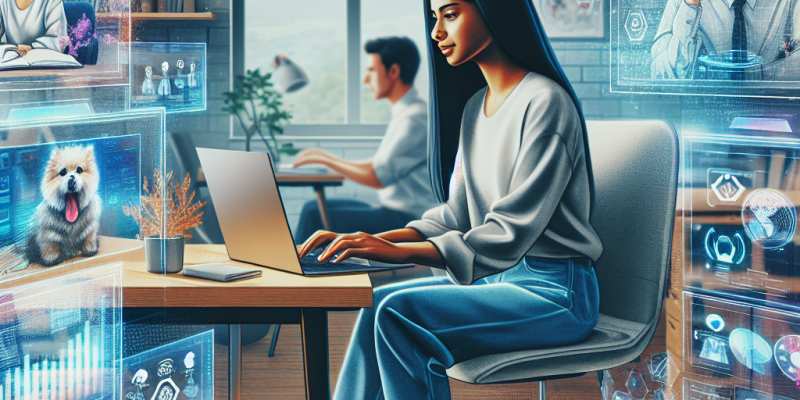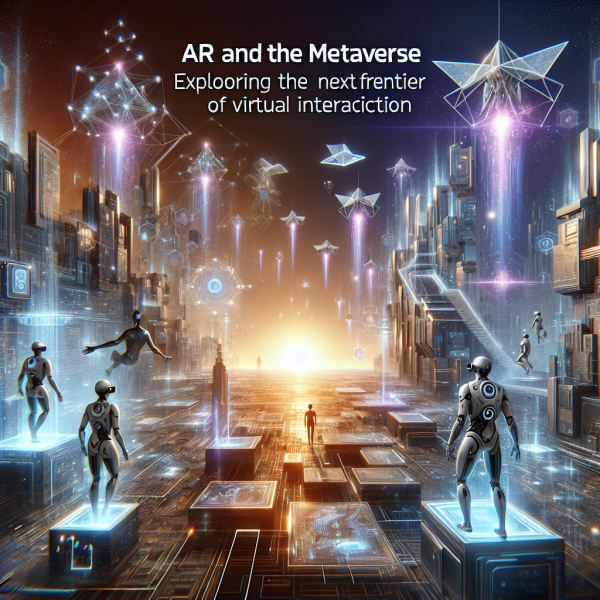Navigating the New Normal: How AR is Enhancing Remote Collaboration and Telework

Navigating the New Normal: How AR is Enhancing Remote Collaboration and Telework
The COVID-19 pandemic has accelerated a significant shift in the way we work, pushing businesses and individuals toward remote collaboration like never before. The term "new normal" has become synonymous with flexibility, adaptability, and digital transformation. As companies continue to embrace telework, one technology is emerging as a game changer: Augmented Reality (AR). This article explores how AR is enhancing remote collaboration in the workplace, offering innovative solutions that help teams stay connected, productive, and engaged.
Understanding Augmented Reality
Augmented Reality refers to the technology that overlays digital information—such as images, videos, and sounds—onto the real world. Unlike Virtual Reality (VR), which immerses users in a completely virtual environment, AR enhances the real world with interactive elements. With the rise of AR-capable devices, such as smartphones, tablets, and smart glasses, the potential for remote collaboration has exploded.
Enhancing Remote Collaboration with AR
-
Real-time Visual Collaboration
One of the most powerful applications of AR in remote collaboration is real-time visual assistance. Employees can leverage AR to share visuals and schematics, enabling them to work together even when miles apart. For instance, architects can project 3D models onto physical spaces, allowing clients to visualize potential designs directly in their environments. This facilitates better decision-making and streamlines feedback processes, leading to more effective collaboration.
-
Guided Troubleshooting and Support
For industries that rely heavily on technical expertise, AR offers significant advantages for troubleshooting and maintenance. Technicians in the field can wear AR glasses that provide live annotations and instructions from remote experts. This real-time guidance eliminates guesswork, reduces errors, and speeds up resolution times. For companies in sectors such as manufacturing and IT, AR can significantly enhance operational efficiency, enabling swift responses to issues without the need for on-site visits.
-
Immersive Training and Onboarding
The shift to remote work has posed challenges for training and onboarding new employees. AR can bridge this gap by providing interactive training experiences that simulate real-world situations. New hires can explore virtual work environments, engage in hands-on tasks, and receive immediate feedback. This immersive approach not only enhances learning but also fosters a sense of belonging and engagement, vital for remote teams.
-
Enhanced Meetings and Presentations
Traditional video conferencing can feel limiting, often reducing the dynamism of meetings to little more than a grid of faces. AR-powered tools can inject interactivity into virtual meetings, allowing users to share environments, manipulate 3D objects, and visualize data in real time. Imagine discussing a product roadmap while visualizing it in a 3D format, or brainstorming new ideas while manipulating virtual post-it notes. This level of engagement fosters creativity and collaboration often lacking in conventional meeting formats.
- Social Connection and Team Building
Maintaining team morale and camaraderie can be challenging in remote work settings. AR can help bridge the social gap by providing interactive environments where employees can engage in team-building activities. Virtual team outings, games, or collaborative projects using AR elements can promote a sense of community, allowing remote employees to bond in ways that transcend geographical barriers.
Challenges and Considerations
While the benefits of AR in remote collaboration are undeniable, several challenges persist. The accessibility of AR technology can be a hurdle, as not all employees may have access to the necessary devices or software. Additionally, there may be a learning curve associated with adopting new technology, necessitating effective training and support.
Privacy and data security also pose significant concerns, especially when sensitive information is shared during collaborative efforts. Companies must ensure robust security measures are in place to protect proprietary information during AR interactions.
Conclusion
As businesses adapt to the evolving landscape of work and continue to embrace remote collaboration, Augmented Reality provides an innovative solution that enhances productivity, engagement, and creativity. By overcoming the traditional limitations of telework, AR allows teams to visualize concepts, conduct training, troubleshoot issues, and connect on a more profound level. Navigating the new normal will require businesses to embrace this transformative technology fully, empowering employees to thrive in an increasingly remote world. Investing in AR not only equips teams with powerful tools but also signals a commitment to fostering an adaptable, collaborative future.













